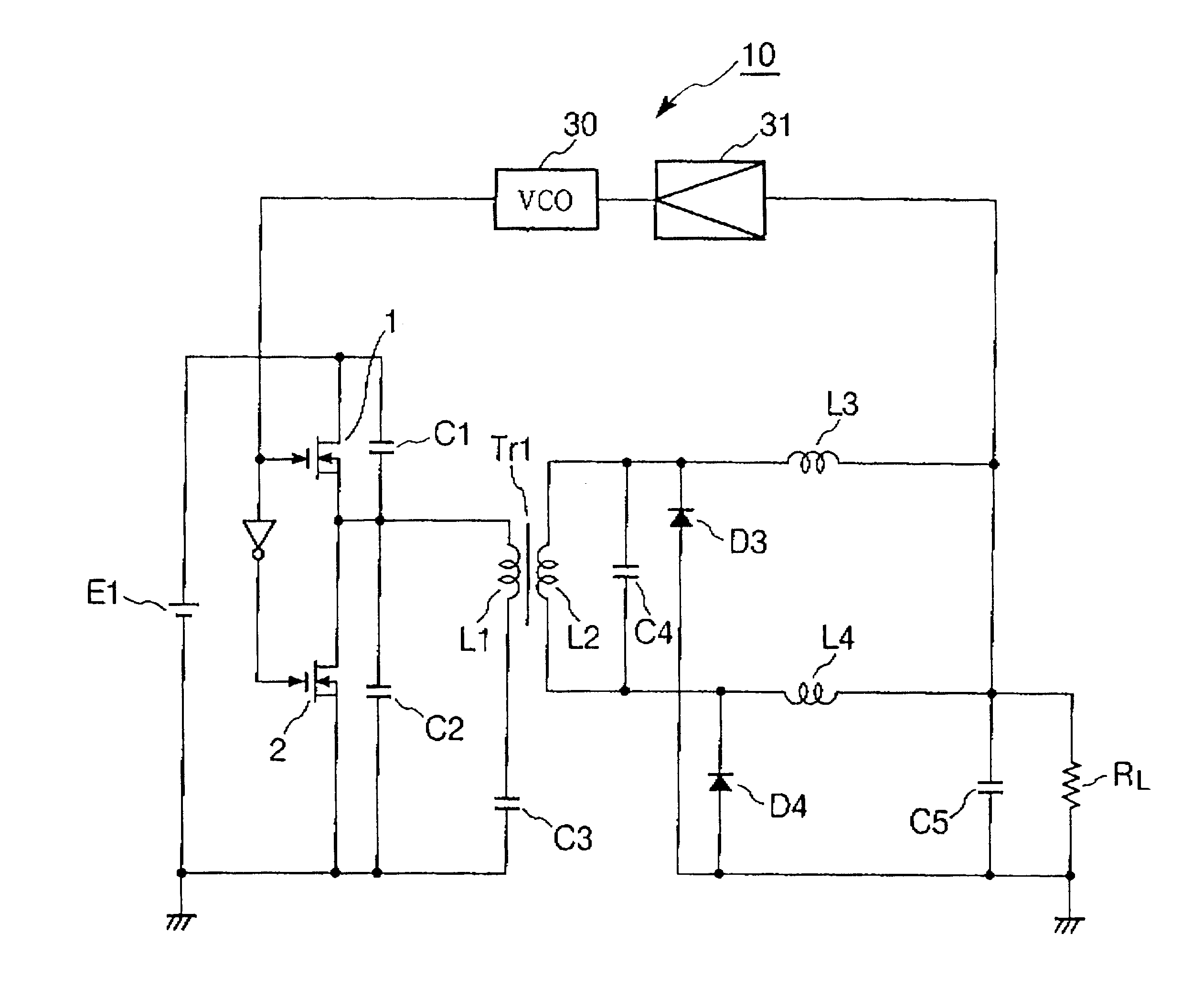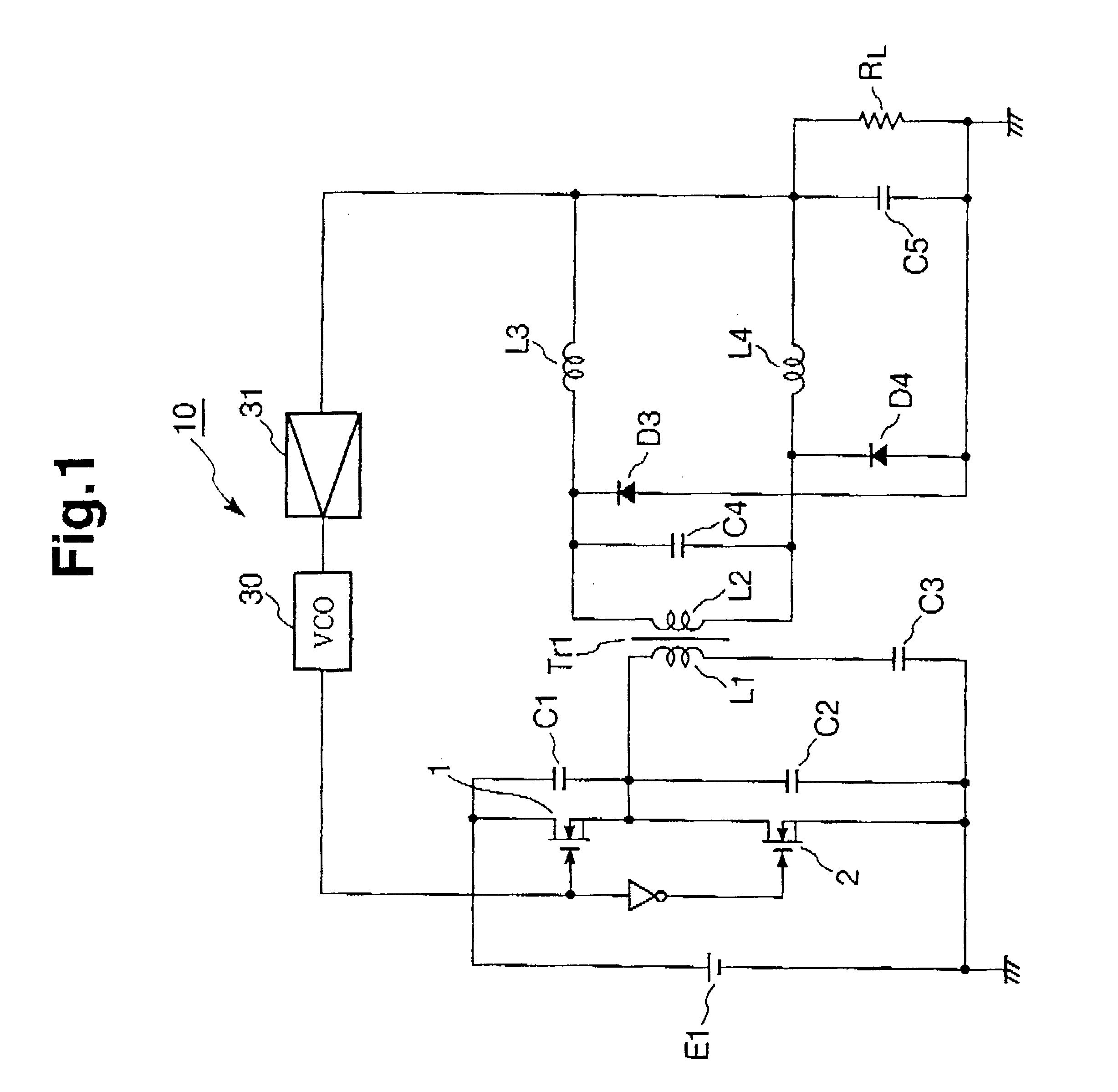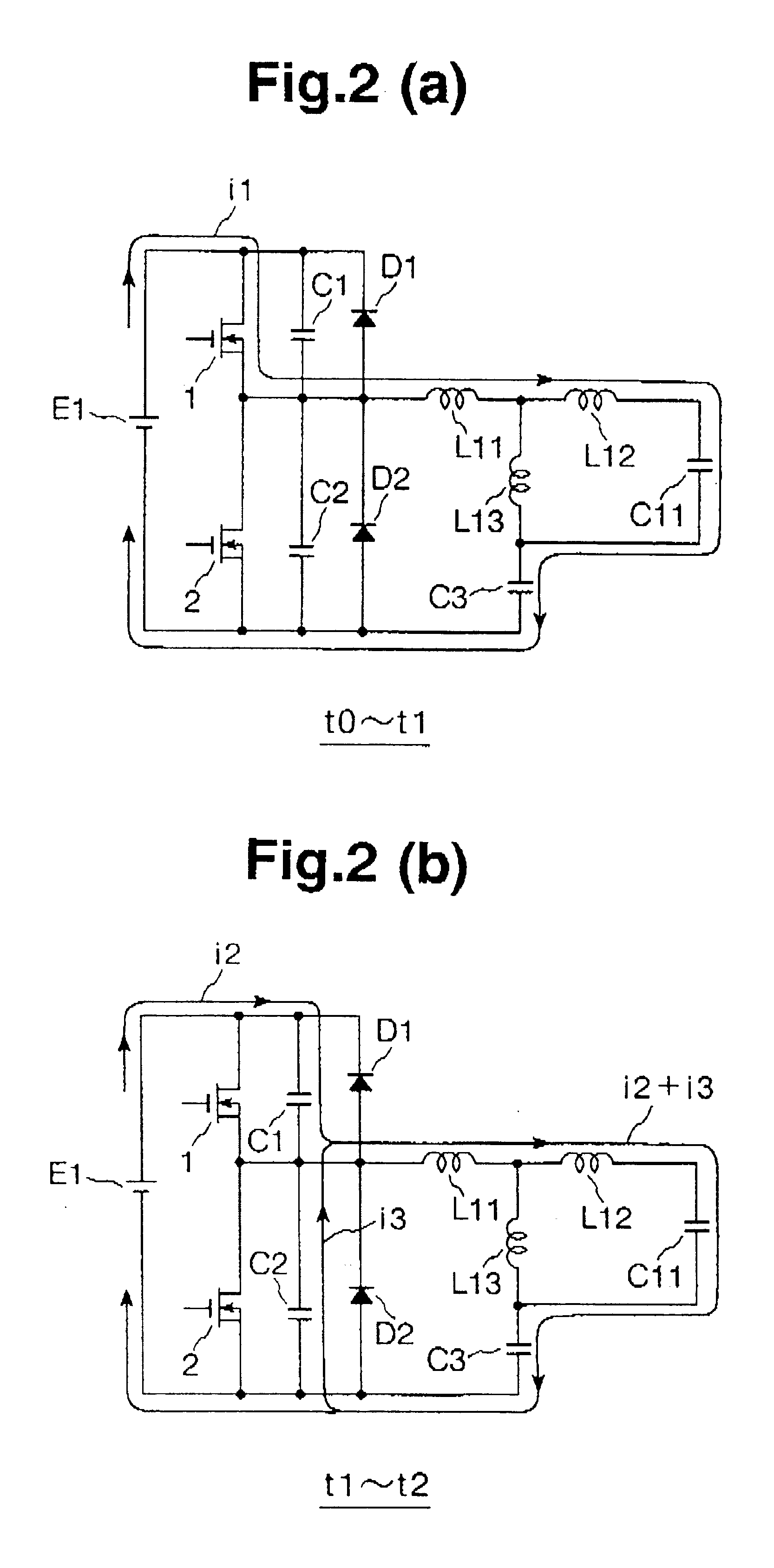Resonant power converter
- Summary
- Abstract
- Description
- Claims
- Application Information
AI Technical Summary
Benefits of technology
Problems solved by technology
Method used
Image
Examples
first embodiment
First, FIG. 1 is a circuit diagram showing the circuit configuration of a resonant power converter according to the present invention. As shown in this circuit diagram, a resonant power converter 10 is equipped with a DC power source E1, two MOS-FETs 1, 2 (switching means) connected in series with respect to the DC power source E1, a voltage controlled oscillator (hereinafter, referred to-as a VCO) 30 for controlling the frequency of the driving signals supplied to the MOS-FETs 1, 2, a capacitor C1 connected in parallel with the MOS-FET 1, a capacitor C2 connected in parallel with the MOS-FET 2, and a transformer (resonant transformer) Tr1 which includes a primary coil (winding) L1 and a secondary coil (winding) L2. In this arrangement, one end of the primary coil L1 of the transformer Tr1 is connected to the junction between the MOS-FETs 1, 2, and the other end is connected to the negative side of the DC power source E1 via a capacitor C3.
The VCO 30 turns the two MOS-FETs 1, 2 on a...
second embodiment
Further, a sinusoidal waveform voltage is generated across the resonance capacitor C4 provided in the secondary side. Therefore, if this voltage is utilized to drive switching elements (such as MOS-FETs, thyristors or the like which are used as rectifying means), it is possible to easily carry out synchronous rectification for the current flowing through the switching elements. Namely, when the voltage waveform (sinusoidal wave) generated across the capacitor C4 is used as drive signals, it is possible to drive the MOS-FETs using the drive signals. As a result, it is not necessary to provide a separate drive circuit for driving the MOS-FETs, thereby enabling to simplify the overall circuit structure. This will be discussed in more details with reference to the second embodiment described below.
Furthermore, because it is possible to achieve zero ripple, the capacity of the output capacitor C5 can be made small. Further, because the current flowing through the choke coils L3 and L4 is...
PUM
 Login to View More
Login to View More Abstract
Description
Claims
Application Information
 Login to View More
Login to View More - R&D
- Intellectual Property
- Life Sciences
- Materials
- Tech Scout
- Unparalleled Data Quality
- Higher Quality Content
- 60% Fewer Hallucinations
Browse by: Latest US Patents, China's latest patents, Technical Efficacy Thesaurus, Application Domain, Technology Topic, Popular Technical Reports.
© 2025 PatSnap. All rights reserved.Legal|Privacy policy|Modern Slavery Act Transparency Statement|Sitemap|About US| Contact US: help@patsnap.com



